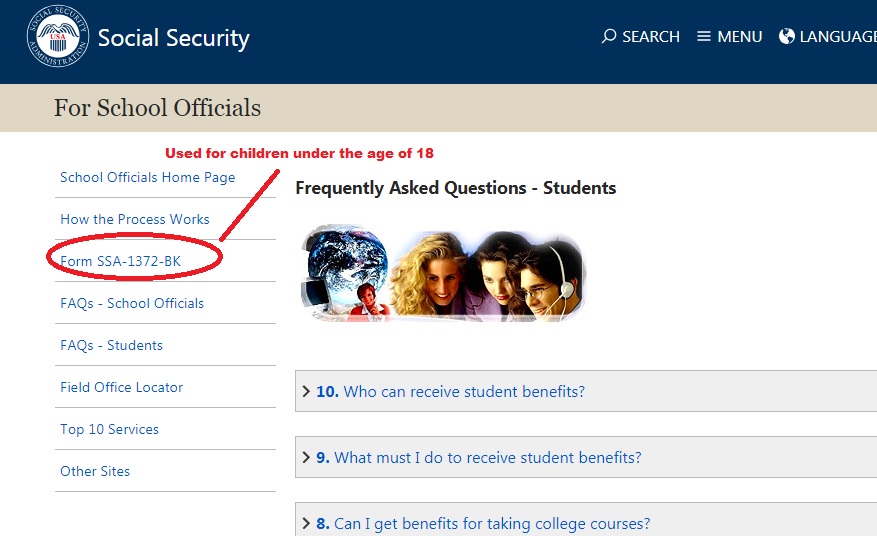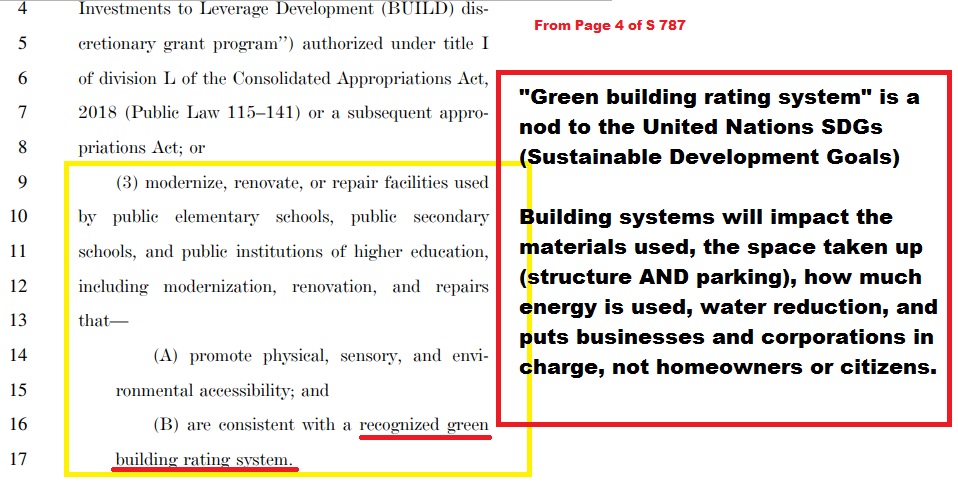Anti Fed Ed Warriors, today, I’d like us to look at some federal bills. None are really about education, but will, nonetheless, impact education at all age levels.
Why feature these? Well, first, they are ‘back door’ bills into the continued federal overreach into education AND taxpayer abuse. Secondly, some of the ‘biggest’ names in the 2020 Presidential race are either sponsors or co-sponsors.
First Up, S 478, Social Security Expansion Act:
Warriors, this Bill is sponsored by Sen. Bernie Sanders, co-sponsored by Senators Cory Booker, Kamala Harris, Kirsten Gillibrand, and Jeff Merkley. Of these 4, only Sen. Merkley is not running for President. This Bill is sure to be an election issue.

The Bill is 44 pages long, and is in the Senate Finance Committee. (*Note: There is an almost identical House Bill, 1170.)
The purpose? Long term ‘solvency’ for Social Security. (Warriors, if the Senators knew anything, they’d know that Social Security was NEVER supposed to be a permanent program. It was merely to be a short term program during the Depression. However, Congress has kept Social Security in place, so much so, that some Americans view it as a right.)
That said, among the expansion changes S 478 has for us:
Won’t happen until 2024 (So why have it introduced in 2019 and before an election?)
Will increase benefits by 1 percent in 2025
Will rise by 1 percent each year between 2026 and 2038
In 2039 and beyond, a 15 percent rise in benefits
Lifetime low earners will get a ‘raise’ based on the number of years they are employed
Will amend the IRS Tax Code where Social Security is concerned
Will have a name change inserted, “Social Security Trust Fund”
Will place the Commissioner of Social Security in charge of the Fund, not the different federal agencies secretaries.
Supposedly, the expansion will not apply to other laws where Social Security funds are used or embedded. We’ll need to watch this. Why? Social Security is used in several other laws. If it’s not used in other laws, laws which concern data mining (like FERPA and FEPA, for example), will connect to where the Social Security funds are used.
In education, ESSA (Every Student Succeeds Act) uses Standards)
Social Security funds for special needs, Native American children, child foster care, troubled youth, homeless students, and SEL (social emotional learning). Why does ESSA use Social Security funds? For one purpose only:
College and Career Readiness (aka: Common Core State Standards)
In this pro CCSS Machine Report from Rand Corporation, you won’t see Social Security named, but you will see one of the funding streams for ESSA, Social Security is used in, Title One funds. From this website in Texas, you’ll see that school districts participate in using Social Security for teachers as they retire. The U.S. Dept. of Education uses Social Security funds and or information in relation to student aid, student debt collection, and other places.
According to a Social Security bulletin, the economy and its trends, combined with your level of education and what job you have, your future benefits from Social Security can be impacted.
From the Social Security page for school officials:

S 478 Education Changes:
Warriors, what ARE the changes in education connected to Social Security in this Bill?
Pages 8 & 9 will extend benefits for children under the age of 22 this applies to either a family member’s disability insurance (child must be a beneficiary) or their own.
Pages 10 & 11 show that if they are not under someone’s disability or old age insurance, the age is lowered to 19. The ‘catch’? Full time student at elementary or secondary schools.
Pages 13-15 extend all of the above to the HEA (Higher Education Act). Again, full time student status is required. Page 16 extends Social Security for those who have reached 22 years of age, but haven’t graduated yet (includes certifications, too).
All these amendments to this part of S 478 will take effect 1/1/20.

Second Up, S 787, American Housing and Economic Mobility Act:
Warriors, this Bill is sponsored and co-sponsored by other 2020 Presidential hopefuls, Sen. Warren (sponsor), Sen. Gillibrand, and, Sen. Markey (not running for President).
We can be pretty certain these topics will be among the platforms and issues for the election, too.
The purpose of S 787 is to make housing more affordable AND ‘other purposes’. Warriors, this Bill is 100 pages long. (*Note: The House has an identical Bill, HR 1737.)
Among the changes, you’ll find innovation grants for housing, expansion of rights connected to the Fair Housing Act, community financing for towns which haven’t recovered from disasters (natural or economic), amends the IRS Tax Code, attacks racism, and, supposedly simplifies gift taxes. Sounds great, doesn’t it?
Catches to all the ‘greatness’ include, revising minimum lot sizes (for ‘denser’ housing), incentives to develop land (or use it for other productive purposes), community partner groups can buy entire pools of mortgages (foreclosure), marital status is redefined, gender identity is loosened, sexual orientation is embedded, and will involve the Civil Rights Act.
So, how is education impacted? Page 2 directly embeds ESEA (Elementary and Secondary Education Act) (now called ESSA), Page 3 directly embeds the HEA (Higher Education Act). You’ll find ‘education’ mentioned on Pages 4 (see below), 33 (homes can be used to finance your education), 37 (HUD, Housing and Urban Development) homeowner education for responsible ownership), and 40 (consumer education).
Why embed ESSA and HEA? Because the grants available in S 787 can be used to update school buildings as per the Housing and Community Development Act of 1974! By embedding these education based laws, you also codify ALL that goes with them. For example, the 21st Century Community Learning Centers, the Promise Neighborhoods, the Community Development Block Grants, the Preschool Development Block Grants, the Regional Career Center Schools, etc.

To learn more about ‘green building systems’ go here.
Related Bills:
S 478 has 2 other related Bills, one from the Senate and one from the House. Both have the same name, Social Security 2100 Act. S 269 and HR 860. Education is only mentioned one in the Senate version and twice in the House’s. (The House’s version is in the Education and Labor Committee and denotes a change in authority from Secretary of Health, Education, and Welfare to the Commissioner for Social Security. The Senate’s version only denotes the power shift.)
Closing:
Warriors, look for my new series centered on the 2020 Presidential candidates. I’ll begin with those running who currently hold a federal political office. Where do they stand on the issue of education? Are there current Congressional bills about education they sponsor or co-sponsor? What Congressional bills have they sponsored or co-sponsored related to education? Are they supported by the CCSS Machine? I’ll also review President Trump’s education (and related) activities.
After that, State leaders and then, private citizens. What are their stances on education? Are they employed or supported by the CCSS Machine?
We the People MUST be heard!




1 thought on “Modern Moves”